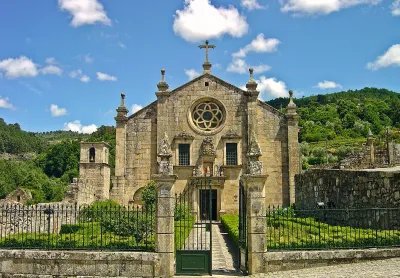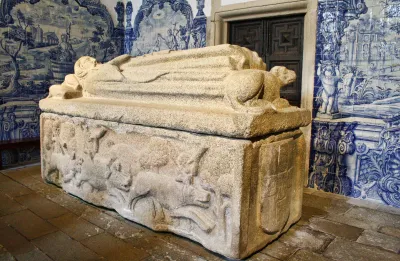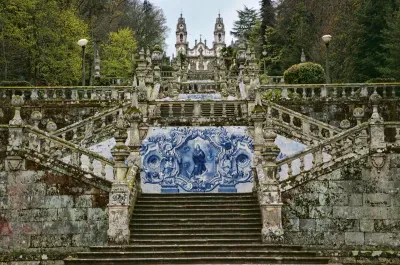
Mosteiro de São João de Tarouca Vitor Oliveira CC BY-SA
Tomb of Pedro Afonso - Count of Barcelos Euclides M S N Santos CC BY-SASão João de Tarouca Monastery
With construction beginning in 1154 this was the first Cistercian monastery to be built in Portugal. As with most sites of such antiquity there are a mix of architectural styles reflecting development over the centuries; from Romanesque through to Baroque.
Unlike most other Cistercian monasteries, São João de Tarouca is dedicated to St John as opposed to the Virgin Mary. This is probably due to the fact the monastery was established before this became the tradition. An other unique feature of the monastery is the large dormitory which is constructed over two stories. This was built in the 17th century when the monastery underwent a series of expansions.
From the beginning this was a wealthy monastery. Initially funded by Portugal's first king -D. Afonso Henriques - further generous endowments and efficient management ensured the funds flowed in. Some of this wealth can be seen in the fine azulejos, ornate gilded woodwork and fine art that adorns the church. This is also the site of the tomb of Pedro Afonso, Count of Barcelos. With its recumbent statue of the duke atop and sculpted detail on the sides it is well worth a look.
With the Portuguese dissolution of the monasteries in 1834 the Mosteiro de São João de Tarouca became a parish church whilst much of the complex was left to decay.
Address
São João de TaroucaLamego3610-082Phone
+351 254 678 766Link
http://www.culturanorte.pt/en/equity/st-john-monastery-of-tarouca/Attraction type

Lamego travel guide »
Nestled among the terraced slopes of the Douro valley port wine-growing region, and overlooked by an ornate shrine, the town of Lamego is elegant and infused with Baroque style. Atop one of its two hills stands the 13th century keep and a castle 100 years its senior. The Porta dos Figos gateway arch leads into the narrow streets of the inner town. Also found here is a somewhat unusual piece…